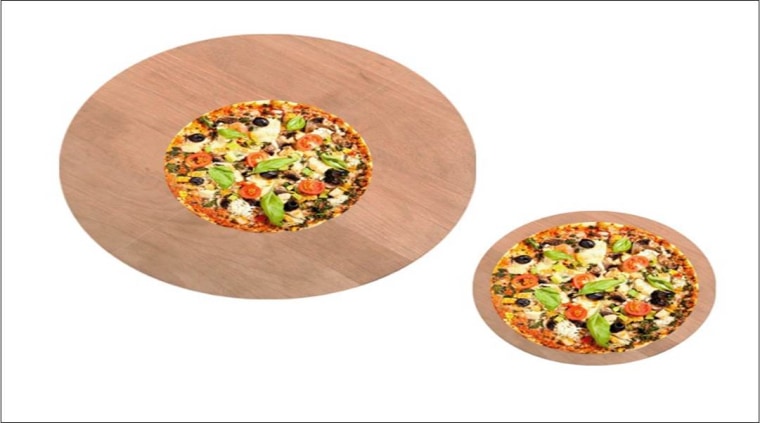It’s difficult to fool a hungry brain.
When people want to eat less, but not feel deprived, the popular advice is to use smaller plates to make the portions seem bigger. TODAY put the idea to the test in a Rossen Reports segment in 2016, and our nutritionists have been serving the tip up for years. The idea is that a modest dinner will suddenly transform into an overflowing meal when served on a tiny platter.
Not always, it turns out. The illusion works, but not when you need it most, a recent paper published in the journal Appetite discovered.
“What we consistently found in this study was that when people were hungry, the plate had much less of an effect on their perception of size,” Tzvi Ganel, co-author and head of the laboratory for Visual Perception and Action at Ben-Gurion University of the Negev in Israel, told TODAY.
“They were not fooled by [the size of] the plate.”
For the study, the researchers explored how hunger affected the way people fell for the Delboeuf illusion, which finds that things appear to be of different size depending on whether they are placed within larger or smaller objects. Our perception is always relative to something else in the environment, so plates can serve as a very strong cue for what’s on them, Ganel said.
Some study participants were asked not to eat for at least three hours before the experiments, while others were asked to eat right before. Everyone was then shown images of pizzas placed on smaller and larger round trays, as well as images of non-food items, like hubcaps, embedded in different size circles.

It turned out everyone fell for the illusion when it came to the non-food items. But the people who were hungry were “less distracted by the surrounding context” when it came to the food — in other words, they weren’t as fooled by plate size and judged the pizza portion more accurately than people who recently ate.
It makes sense the food-deprived participants weren’t tricked, Ganel said. In times of need — when food could play a vital role for survival — your brain is motivated to be more accurate.
You can still use smaller plates as part of your weight-loss strategy, but they won’t be always as effective as you think they might be, Ganel said.
“Unfortunately, plate size may not matter as much as we once thought it did,” said Charlotte Markey, a psychology professor at Rutgers University in New Jersey, author of “Smart People Don't Diet: How the Latest Science Can Help You Lose Weight Permanently” and co-author of “Body Positive.” She was not involved with the study.
“Although, to be fair, if your plate is too small to hold too much food and you are disinclined or unable to get seconds, it does offer some sort of restraint.”
There are other ways to help yourself not to overeat
Markey suggested these tips:
Change your personal eating environment. Having too much food, too easily accessible, is a big problem. Don’t buy food you don’t want to eat — just keep it out of your house. If you don’t want to eat ice cream regularly, don’t buy it. Make it a treat and go out for ice cream once in a while.
To eat better outside the house, bring food with you. Throw a pre-packaged healthy snack you like in your purse, backpack or briefcase. Markey loves single-serve packages of almonds or cashews — they’re filling, high in protein, and keep her from going overboard and eating an entire container.
Dine out less. Try to limit meals eaten out of the house to a couple per week, she advised. Restaurant portion sizes are bigger and they usually contain more salt and preservatives.
Don’t drink your calories. It’s estimated liquid calories make up 21 percent of the American diet, but those sugary drinks appear to lower satiety, making you hungrier the more you drink.